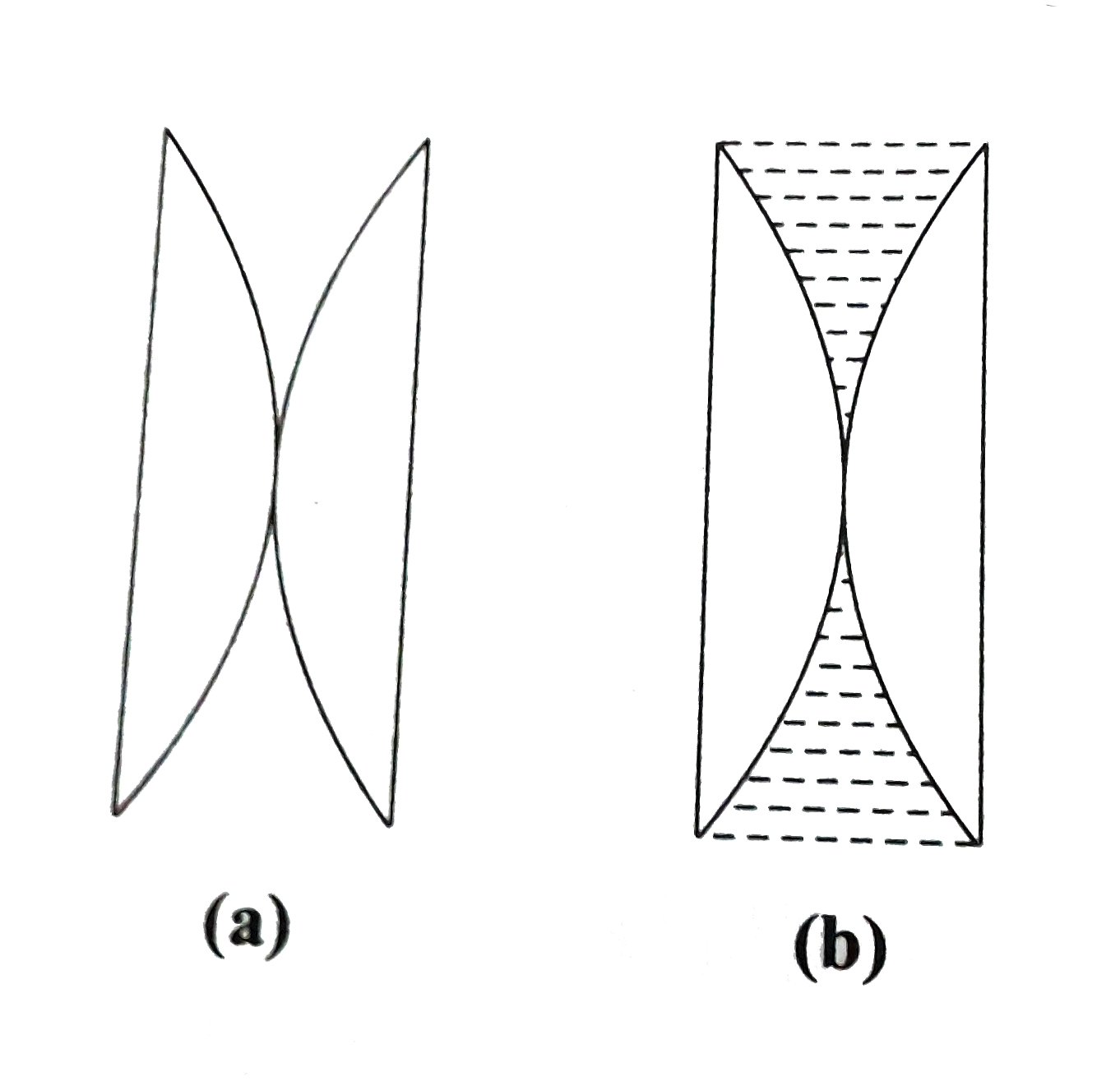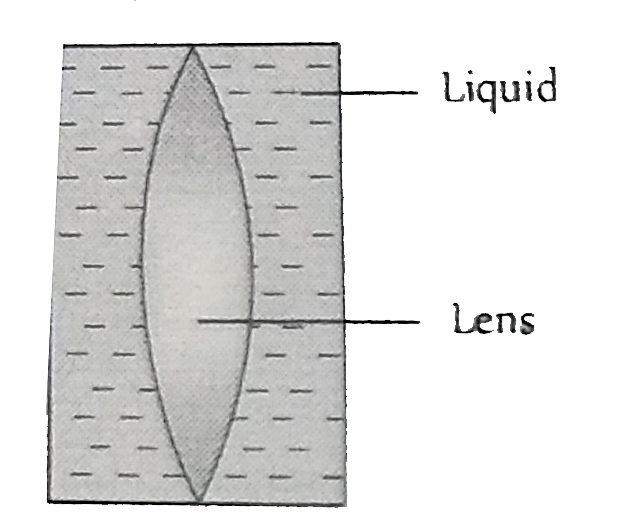Figure(a) shows two plano-convex lenses in contact as shown. The combination has focal length 24cm. Figure (b) shows the same with a liquid introduced between them. If refractive index of glass of the lenses is 1.50 and that of the liquid is 1.60, the focal length of system in figure (b) will be

−120cm
120cm
−24cm
24cm
The correct Answer is:a.
Since the refractive index of the liquid is grater than the refractive index of glass, therefore the focal length of the system has to be negative. So, options (b) and (d) are excluded.
Now, 124=(1.5−1)2R
or R=24cm
Again, for liquid concave lens,
1f=−(1.6−1)(224)
1f=−35×112
or 1f=−112 or f=−20cm
Now,1F=124−120=5−6120
or F=−120cm
Topper's Solved these Questions
- GEOMETRICAL OPTICSBOOK - CENGAGE PHYSICSCHAPTER - GEOMETRICAL OPTICSEXERCISE - Assertion-Reasoninig
2 Videos
- GEOMETRICAL OPTICSBOOK - CENGAGE PHYSICSCHAPTER - GEOMETRICAL OPTICSEXERCISE - Linked Comprehension
51 Videos
- GEOMETRICAL OPTICSBOOK - CENGAGE PHYSICSCHAPTER - GEOMETRICAL OPTICSEXERCISE - Subjective
26 Videos
- FRICTIONBOOK - CENGAGE PHYSICSCHAPTER - FRICTIONEXERCISE - QUESTION BANK
1 Videos
- GRAVITATIONBOOK - CENGAGE PHYSICSCHAPTER - GRAVITATIONEXERCISE - Question Bank
39 Videos
Similar Questions
Knowledge Check
Two thin lenses of focal lengths f1andf2 are placed in contact. The focal length of the composite lens will be
Af1+f22Bf1+f2f1f2C√f1f1Df1f2f1+f2Shown in the figure here is a convergent lens placed inside a cell filled with a liquid. The lens has focal length +20cm when in air and its material has refractive index 1.50. If the liquid has refractive index 1.60, the focal length of the system is
 A+80cmB−80cmC−24cmD−100cm
A+80cmB−80cmC−24cmD−100cmA plano-convex lens has refractive index 1.6 and radius of curvature 60 cm. What is the focal length of the lens?
A50 cmB100 cmC200 cmD150 cm
A double convex lens has a focal length of 25 cm in air. When it is dipped into a liquid of refractive index 4/3. its focal length is increased to 100 cm. Find the refractive index of the lens material.
View SolutionA bi-convex lens made of glass (refractive index 1.5) is put in a liquid of refractive index 1.7. Its focal length will be :
View SolutionA bi-convex lens made of glass (refractive index 1.5) is put in a liquid of refractive index 1.7. Its focal length will be :
View SolutionTwo concave lenses are kept in contact and magnitude of equivalent focal length is found to be f1. Now the space between two lenses is filled with liquid of refractive index slightly more than 1. The magnitude of focal length of combination becomes f2.
View SolutionA bi-convex lens made of glass (refractive index 1.5) is put in a liquid of refractive index 1.7. Its focal length will
View Solution

